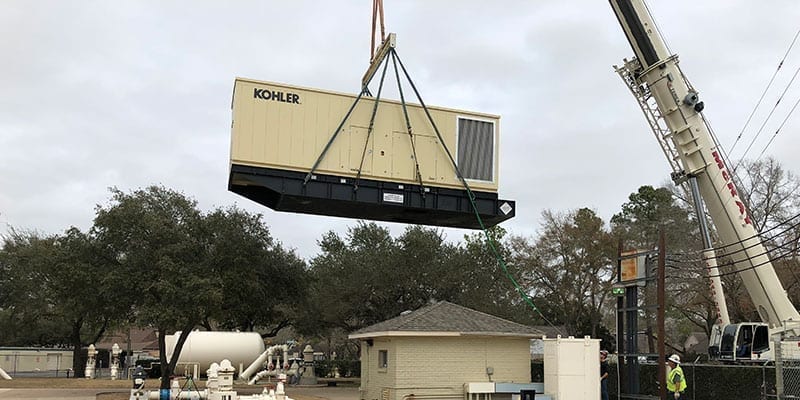Facility managers are charged with ensuring the smooth operation of their facility, whether it be a manufacturing plant, hospital, or highrise office building. Part of a facility manager’s duties includes making sure the facility has power, so critical operations can continue even during a power outage. A standby generator can provide the backup power your facility needs to protect your inventory and maximize productivity, but do you know how to pick the right generator to support your facility’s needs? It can get complicated! Generators come in all shapes and sizes in order to power a long list of utilities.
Having an understanding of commercial generator sizing is critical when it comes to picking out the right generator. It’s important that you select an efficient generator, but one with enough power. One that can run continuously and indefinitely until power is restored. The last thing you want is a system that lets you down during an emergency.
Estimating your power needs is difficult which can lead to miscalculations and an undersized generator that is insufficient. This can not only slow or stop your operation, but it can also damage important and costly equipment. Making sure you have the right-sized generator is critical.
Whether you need a solution for maintaining productivity at an industrial plant or you need to keep inventory frozen and cooled at a grocery store, the first step is to simply make a list of everything the generator will need to power at any given time. For some commercial and retail applications without extra machinery needing power, a square foot measurement system is generally used to factor the power requirements. A common equation used by engineers is to take the generator’s kW, say 50 kW and add 10 watts per square foot of facility space to come to an estimate. This helps configure the “starting wattage.” For facilities with extra machinery and power tools, the “running wattage” also needs to be determined. This is how much power is needed to keep equipment running for a given length of time. You can usually find tool and machinery wattage information in the owner’s manual for each piece of equipment or it may even be printed on the side or back of the machine.
Another factor to consider when configuring standby power systems is voltage dips in the generator. These dips affect both the generator and the equipment they’re powering. Different pieces of equipment have different tolerances for voltage dips, and the starting load of an electric motor can be as much as six times its running load. You’ll need to consult the manufacturer’s spec sheet on each piece of equipment to determine what the allowable drop for the input voltage is.
For facilities with temperature-sensitive inventory or computers holding important data, you’ll want to include an automatic transfer switch, meaning that the generator engages automatically when the power goes out and shuts down when it returns. This ensures there are minimal gaps in which your cooling systems, computers, engines, etc. will stop running.
Once you’ve assessed your system’s needs, the generator experts at Total Energy Solutions can walk you through which products are the best fit for your business. Our main goal is always the same; provide service exceeding expectations. Our service and expertise is what gives our clients the peace of mind knowing they’ll have a reliable backup power source. S0 contact our generator experts today to discuss your power needs and let us help keep you online.

